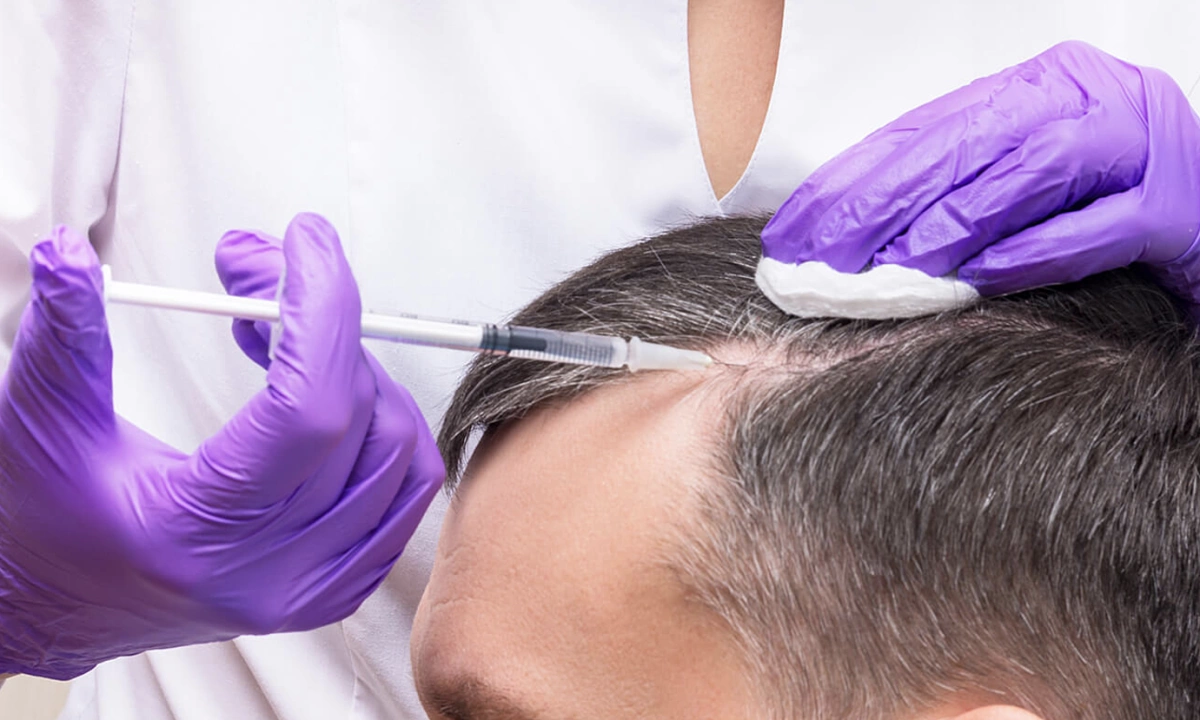What Is a Hair Transplant?
A hair transplant is a medical procedure that involves transferring hair follicles from one part of the body (typically the back or sides of the scalp) to areas experiencing hair loss or thinning. Most commonly used to treat male pattern baldness, the procedure has gained immense popularity due to advances in technique, natural-looking results, and improved recovery times.

Types of Hair Transplant Techniques
Follicular Unit Transplantation (FUT)
Also known as the strip method, FUT involves removing a strip of scalp from the donor area and dissecting it into individual follicular units. These units are then implanted in the balding area.
Pros:
- Suitable for large areas of hair loss
- Often more cost-effective than FUE
Cons:
- Leaves a linear scar
- Longer recovery time
Follicular Unit Extraction (FUE)
FUE involves extracting individual hair follicles using a small punch tool and transplanting them one by one.
Pros:
- Minimal scarring
- Shorter recovery time
- Ideal for patients who prefer short hairstyles
Cons:
- More time-consuming
- Generally more expensive than FUT
Who Is a Good Candidate for a Hair Transplant?
Not everyone experiencing hair loss is a suitable candidate for a hair transplant. Here are some key factors:
- Age: Most surgeons recommend waiting until hair loss has stabilized, typically after age 25.
- Type of Hair Loss: Ideal for those with androgenetic alopecia (male/female pattern baldness).
- Donor Hair Density: Sufficient healthy hair on the scalp or body is essential.
- Health: Patients should be in good general health to undergo the surgery safely.
What to Expect Before, During, and After the Procedure
Before the Procedure
- Consultation with a certified dermatologist or hair restoration surgeon
- Medical history review
- Scalp assessment
- Customized treatment plan
During the Procedure
- Local anesthesia is administered
- Follicles are harvested and prepared
- Transplantation follows the natural hairline and density pattern
- Duration: 4–8 hours depending on the number of grafts
After the Procedure
- Mild swelling and discomfort for a few days
- Scabbing may occur around the grafts
- Full recovery typically takes 10–14 days
- New hair growth starts at 3–4 months, with full results visible in 9–12 months
Risks and Side Effects
While generally safe, hair transplant procedures can carry certain risks:
- Infection or inflammation
- Scarring
- Shock loss (temporary hair shedding)
- Unnatural-looking results if not done properly
Note: Choosing a board-certified, experienced surgeon reduces the likelihood of complications.
Hair Transplant Costs: What to Expect
The cost of a hair transplant can vary widely based on location, technique, and clinic reputation. In the U.S., the price ranges from $4,000 to $15,000.
Factors Affecting Cost:
- Number of grafts needed
- Surgeon’s expertise
- Clinic facilities and technology
- Geographical region
Pro Tip: Avoid deals that seem “too good to be true.” Quality matters.
Real-Life Success Stories
Many celebrities and everyday individuals have turned to hair transplants with great success. One notable case is Wayne Rooney, the English footballer, who openly discussed his hair restoration journey. Transparency like this has helped reduce stigma and encourage others to explore solutions.
Alternatives to Hair Transplants
If you’re not ready for surgery, here are other options:
Medications
- Minoxidil (Rogaine): Topical treatment approved by the FDA
- Finasteride (Propecia): Oral medication that blocks DHT
Non-Surgical Treatments
- Platelet-Rich Plasma (PRP) Therapy: Uses your own blood to stimulate growth
- Low-Level Laser Therapy (LLLT): FDA-cleared devices to promote hair density
How to Choose the Right Hair Transplant Clinic
Making the right choice is critical to achieving satisfying results. Here are some tips:
- Check Credentials: Board certification and relevant training
- Experience Matters: Surgeons with hundreds or thousands of procedures
- Before-and-After Photos: Real patient outcomes
- Transparent Pricing: Avoid hidden fees
- Patient Reviews: Google, RealSelf, and other review sites can be helpful
Frequently Asked Questions (FAQs)
Q: How long does a hair transplant last?
A: Hair transplants are considered permanent, but some natural thinning can occur over time. Maintenance may be needed.
Q: Is the procedure painful?
A: Local anesthesia is used, so most patients feel little to no pain during the process. Post-operative discomfort is usually mild.
Q: Can women undergo hair transplants?
A: Absolutely. Women with localized thinning or traction alopecia often see great results.
Q: How do I maintain my results?
A: Regular checkups, a healthy lifestyle, and possibly using Minoxidil or Finasteride can help maintain your results.
Final Thoughts
A hair transplant can be a life-changing decision when done correctly. With the right information, realistic expectations, and a skilled surgeon, it’s possible to restore not just hair but also self-confidence.
Trusted Resources:
Internal Links (if applicable):
- Learn more about [PRP therapy for hair loss]
- Explore our guide to [Minoxidil vs Finasteride]
- Discover tips on [post-transplant hair care]
Written by a team of health content experts with over 10 years of experience in dermatology, hair restoration, and patient advocacy. All medical content is reviewed by licensed healthcare professionals for accuracy and trustworthiness.
